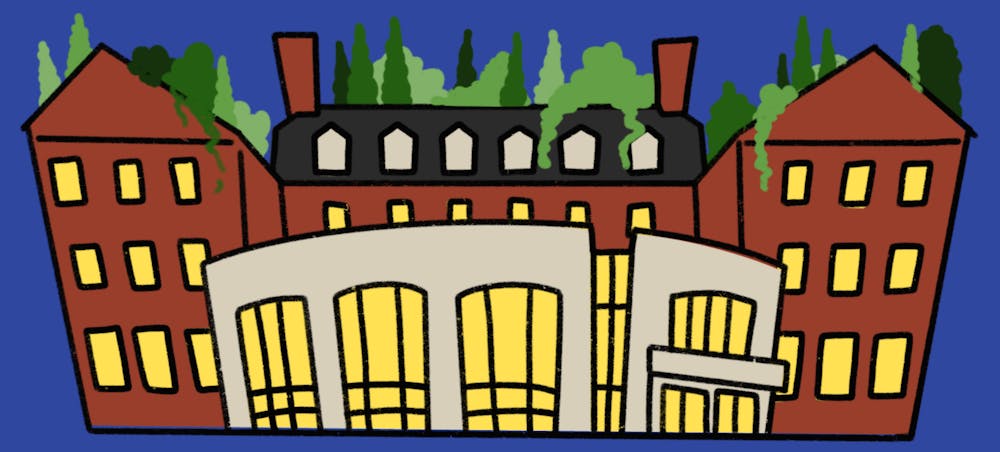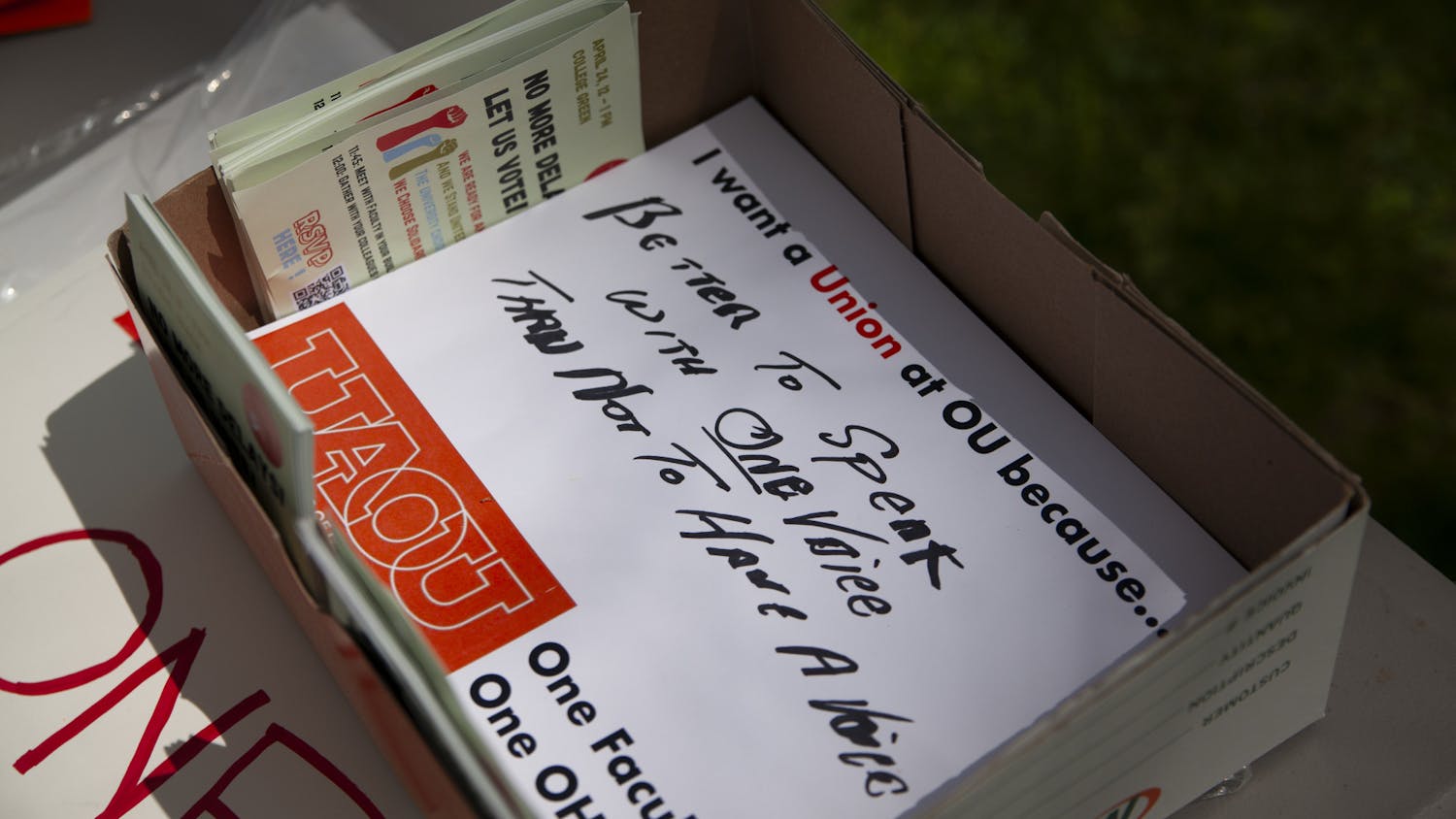Correction Appended.
Students may soon have the opportunity to grow plants on top of Schoonover Center, once construction of the green roof is completed.
The green roof, which furthers Ohio University’s commitment to sustainability, will serve three purposes: research, education and outreach, all through a cross-disciplinary lens.
The project is the brainchild of Kim Thompson, an assistant professor of instruction in the department of environmental and plant biology.
“We don’t have a rooftop planted yet, but so many students and people are involved in the project and it’s coming together well,” Thompson said.
For a green roof to be planted, the roof must be able to support additional weight for saturated soil. When the building underwent renovation six years ago, it was designed to hold a green roof, but the idea never panned out due to expenses. Now, after two years of planning, the green roof is looking to be planted in March 2020.
Thompson has been interested in building a green roof for a long time. She wanted to have a space for people to do environmental and infrastructure research, as well as give Scripps College of Communication students an opportunity to do photo essays, video documentaries and more.
So far, more than 50 students, faculty members and other people are involved in the project, including some members of the Sustainability Ambassadors at OU. Others are students, graduate and undergraduate, who just know the faculty and want to help. But what Thompson finds most impressive is that seven different colleges on campus are involved.
“It will inform other efforts,” Thompson said. “If we can explore these questions here, it’ll help other cities and areas thinking about using green roofs.”
The first grant for the project was written in 2017, and two years later, Thompson received $10,000 in funding from the PepsiCo Zero Impact Fund, $256,000 from the Academic Innovation Accelerator through the office of instructional innovation, an 1804 grant to move the project into the classroom and Program to Aid Career Exploration (PACE) funding to help with the outreach component.
The rooftop isn’t available to the public, so through research and visual projects, Thompson hopes to get other people involved indirectly.
Not only is Thompson trying to involve other campus colleges and organizations, but there is also an outreach initiative associated with schools around the Athens area to get younger students involved. Those involved in the project have built models of traditional rooftops and vegetational rooftops, and use wooden structures to manipulate and compare the differences between each rooftop option.
Unlike traditional rooftops, green rooftops help slow water runoff and clean the water. With the flooding issues in Athens, this could be especially beneficial. Green rooftops also help with climate mitigation by conserving energy in buildings through insulation which results in decreased fossil fuel use.
Natalie Kruse Daniels, an associate professor of environmental studies and director of the environmental studies program, also saw Thompson’s need for a green roof and has been instrumental in its production since the beginning.
“We’re looking at large scale development of green infrastructure that’s going to be accessible to classes and incorporate that data into lesson plans,” Kruse Daniels said. “And students will gain experience that will help them become professionals.”
Meagan Hamilton, a junior studying mechanical engineering, has been more involved with the outreach portion of the project. She came into the project not knowing much about green roofs but has enjoyed the process of learning and interacting with others.
“I love to learn, so this has been a great opportunity for me to learn about green roofs and then turn around and educate other people because this is a really great project that people should definitely know more about,” Hamilton said.
Thompson has loved watching the project come together, and hopes other people want to get involved. People can email Thompson and she will send a survey about the project to learn what area they’re interested in. From there, she will guide people to their specific areas.
It’s been especially heartening for Thompson to see so much student involvement in the project.
“I feel it’s really important that we start putting more effort into sustainability efforts on campus, in Athens and on the planet, and we really need to be thinking about the impact had on climate and water resources,” Thompson said. “I wanted students to get involved to see their enthusiasm about the project, and it makes me hopeful about the future.”
Correction: A previous version of this report misstated the grants and money from grants received. The article has been updated to reflect the most accurate information.






